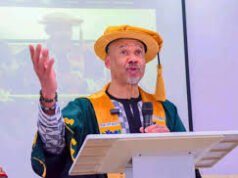In Nigeria’s classrooms, the subject of computer science is often delivered in English—a language that may not always be the first for many learners. But recent research and policy shifts suggest a new pathway: what if children could learn foundational computing concepts in the language they speak at home? This question has begun to shape efforts under the theme of “Teaching Computer Science in Indigenous Languages”.
Nigeria is home to hundreds of languages, and institutions like the Nigerian Educational Research and Development Council (NERDC) have for years worked on curriculum development, language policy and curriculum translation. A 2023 study on local-language STEM education highlighted how teaching STEM content in a native tongue can deepen understanding and engagement. In this context, the movement toward teaching computer science in indigenous languages is gathering interest.
Some pilot programmes have begun addressing this gap. For example, a web-based system developed at Obafemi Awolowo University supports teaching and learning in Yoruba, Hausa and Igbo, particularly using digital tools to enhance multilingual instruction. The evidence from such efforts indicates that introducing computing ideas through familiar linguistic frames may reduce barriers for students whose first language is not English.
Yet, while full-scale curricula are still emerging, the groundwork is being laid. The aim is clear: ensure that when students investigate topics like algorithms, data storage, coding or machine logic, the concept isn’t lost in translation. With careful preparation, teaching computer science in indigenous languages could become a model of inclusive digital education.

Policy, Research and the Emerging Curriculum Landscape
The policy environment in Nigeria is responding. NERDC lists “Language Development” and “Curriculum Development” as among its core roles. In 2025, a new revised secondary school curriculum created subject lists and aligned instruction, though specific mention of indigenous-language computer science modules is not yet prominent.
On the research front, studies such as “Investigating K-12 Computing Education in Four African Countries” included Nigeria and sought to understand computing capacity in schools. Separately, the “Sustainable Mobile Technology in Teaching and Learning” paper noted that programming languages based on Yoruba improve comprehension for students in Africa.
These pieces point to two related issues: first, the need for contextually-appropriate curriculum design in computer science; second, the value of using indigenous languages to reduce the cognitive load of a foreign language barrier. To date, much of the work remains formative and exploratory.
One concrete example: the programme known as CL4STEM (Connected Learning for STEM), piloted in Nigerian secondary schools, aimed to build teacher capacity in STEM through open-educational resources and communities of practice. While not exclusively about indigenous-language computing instruction, it underscores how innovation in teaching methodology is underway.
In short, the pieces are in place: policy frameworks acknowledging local languages, research showing the benefit of mother-tongue instruction, and pilots building teacher and curricular capacity. The next step is to roll out computer science content delivered in indigenous languages at scale.

Teachers, Learners and Language Inclusion in Practice
For many Nigerian students, learning computer science in English can feel like a double challenge: mastering a foreign language and a new technical domain simultaneously. Advocates for indigenous-language instruction argue that when the medium is familiar, the message is clearer.
In practical terms, this means designing lessons that introduce core computer science concepts such as algorithms, data structures, programming logic and digital systems using native languages alongside English. Research shows that learners grasp ideas more effectively when they can think and talk about them in their home language. The study on Yoruba-based programming languages is one such pointer.
Teacher training is crucial to this process. Educators need to translate or adapt terminology, design bilingual or multilingual materials, and ensure that language support does not compromise technical accuracy. For instance, the web-based indigenous language resource from Obafemi Awolowo University outlines how teaching digital concepts in Yoruba, Hausa, and Igbo requires careful mapping of technical terms and cultural contexts.
There is also a cultural dimension: using local languages in teaching sends a message that technology is not foreign, alien or reserved for the English-speaking elite. It positions computer science as accessible to all students. That perspective helps broaden participation in tech fields.
Nonetheless, challenges remain. Translating highly technical vocabulary, creating high-quality teaching resources in multiple languages, and aligning those with national standards takes time and effort. Additionally, consistent funding, teacher capacity building and infrastructure (computers, internet, power) are prerequisites for success.
Despite these hurdles, the benefits are compelling. By teaching computer science in indigenous languages, schools may elevate comprehension, improve retention, boost student confidence and nurture a generation of tech-literate learners who feel capable rather than left behind.
A Roadmap for Scaling: What Comes Next
As Nigeria advances its digital economy goals and seeks to build a robust tech workforce, embedding inclusive education strategies like teaching computer science in indigenous languages could become strategic. Linking policy, research, and practice is key.
First, curriculum developers must embed multilingual computer science modules into secondary school syllabuses. That means national bodies like NERDC reviewing subject content, specifying language variants, and approving textbooks or digital materials. The recent curriculum revisions provide an entry point.
Second, teacher professional development must include training in bilingual/multilingual instruction for computer science. Teachers must be comfortable translating concepts, using native-language pedagogy, and leveraging digital tools. Projects like CL4STEM demonstrate how teacher capacity can grow.
Third, resources must be developed: bilingual textbooks, digital learning platforms, apps, and local-language glossaries for computing. Research on indigenous-language programming and digital tools shows that such resources are feasible.
Fourth, schools must be equipped. Even the best curriculum and materials depend on infrastructure—computers, stable power, network connectivity, and local language support software. The digital divide remains a risk.
Finally, monitoring, evaluation and research must accompany the rollout. As computer science in indigenous languages takes root, data on student outcomes, teacher feedback and scalability will guide refinement. The pilot studies in Africa provide useful models.
In doing so, Nigeria could not only broaden access to digital education but also affirm cultural and linguistic inclusion. Students who feel their language is valued may engage more deeply and confidently in computer science. This in turn, could feed the tech-industry pipeline and support national development goals.

The shift toward teaching computer science in indigenous languages is still emerging in Nigeria. The policy frameworks and research evidence are in place, teacher training and resource development are beginning, and the promise of deeper inclusion is real. The road will not be free of obstacles, but the direction is clear: technology education that speaks the student’s language has the power to transform both learning and opportunity.
Join Our Social Media Channels:
WhatsApp: NaijaEyes
Facebook: NaijaEyes
Twitter: NaijaEyes
Instagram: NaijaEyes
TikTok: NaijaEyes




